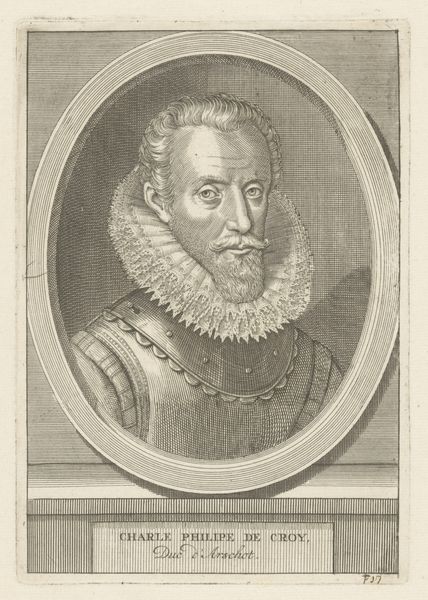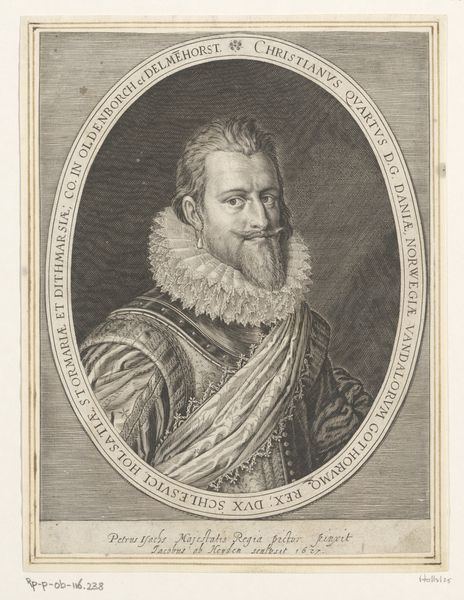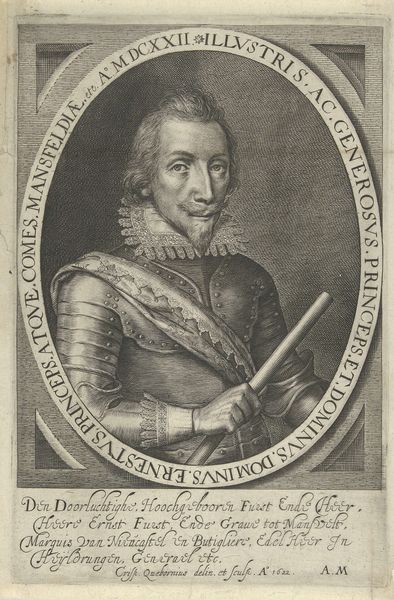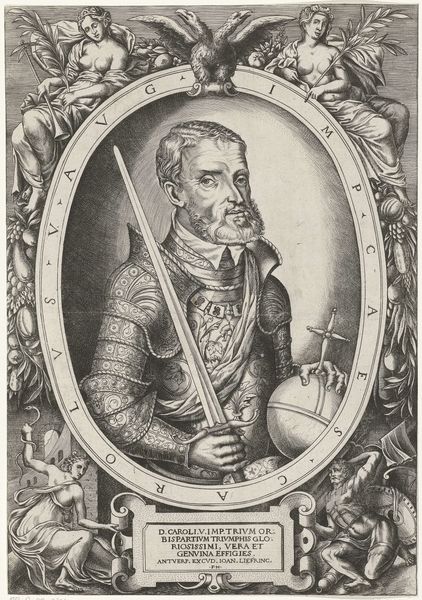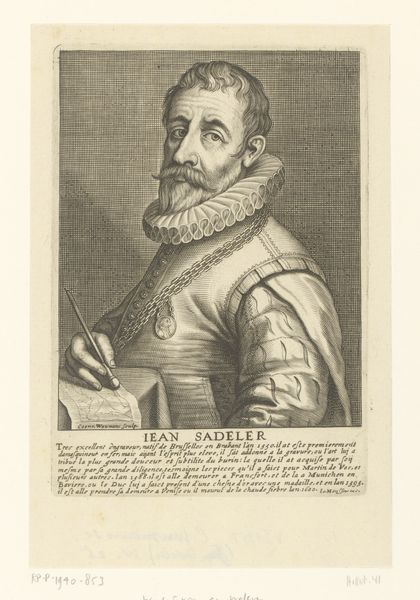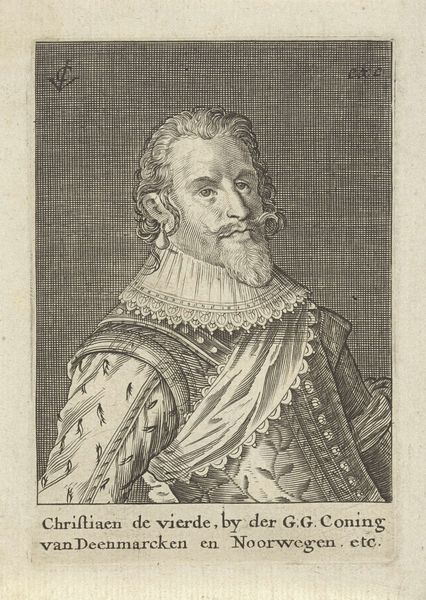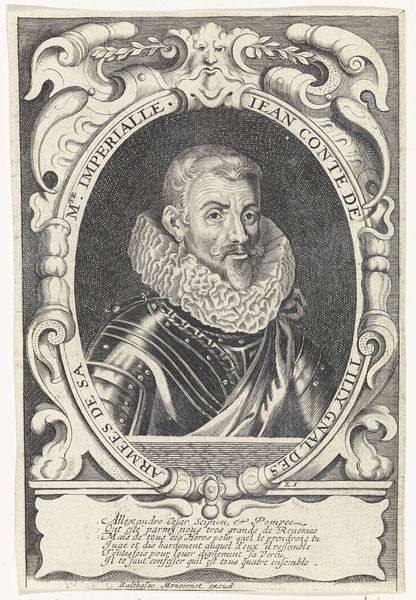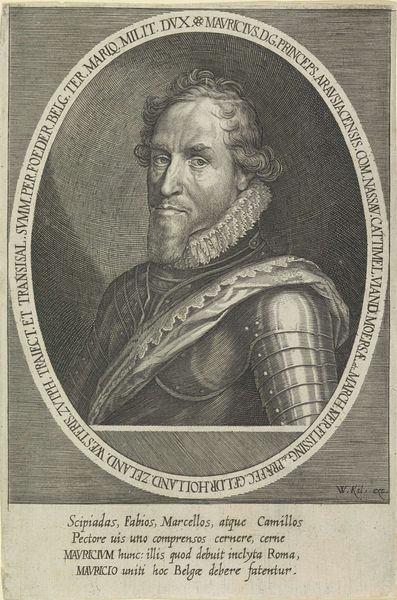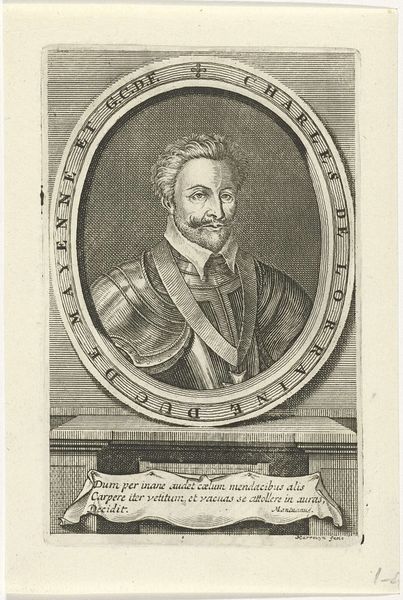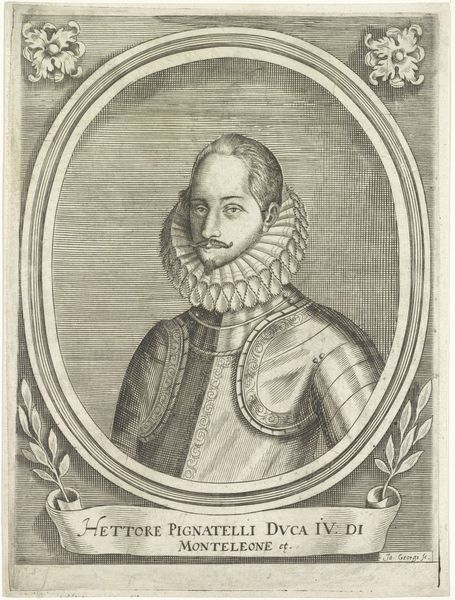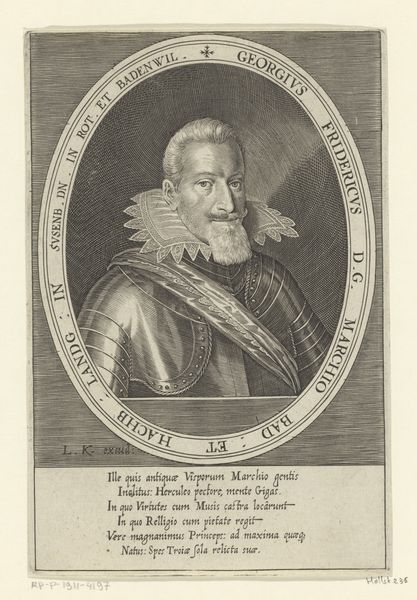
drawing, print, engraving
#
portrait
#
drawing
#
baroque
# print
#
engraving
Dimensions: sheet: 9 3/8 x 7 5/16 in. (23.8 x 18.6 cm)
Copyright: Public Domain
Curator: This portrait before us, dating somewhere between 1600 and 1688, is titled "Portrait of Claude de Marolles." The piece resides here at The Met. It’s attributed to Claude Mellan. Editor: My first impression is how meticulously crafted this portrait appears, all those fine lines making up texture and form, giving an almost tangible feel to his ruff and armor. The monochrome heightens the intensity. Curator: Mellan, known for his unique engraving technique, demonstrates that skill beautifully here. It reflects the political and religious turbulence of the period. Marolles was clearly a figure of importance, likely involved in the religious conflicts ravaging France. Editor: Right, and the means by which it's made—the precise, deliberate act of engraving—becomes integral. You think about the labor, the sheer dedication, and how it elevates the status of both the sitter and the artist. The engraving is the craft, really. Curator: Indeed. Consider also the social function of such a portrait. It solidified Marolles’ status. Displayed perhaps in his home, in a public space, or reproduced as prints, it constantly reinforced his authority and virtues. Editor: The uniform tells its own story, doesn’t it? Not just an indication of status, but material – metal, cloth, crafted with significant skill, made to project an image of strength and command. The materials and their making speak volumes about early modern society. Curator: The Baroque period valued drama and elaborate detail as strategies of persuasion. These portraits served less as documents of reality, and more as ideological pronouncements of class, family, and faith. Mellan has delivered it very well in the likeness of de Marolles. Editor: It's not simply about capturing his appearance. It's about the politics of representation through material things, like his armour which displays power and the delicate skill needed to show status through printing, with social complexities reflected in those very lines etched into the plate. Curator: This really gives a new perspective on this Baroque portrait! Editor: Yes, it seems we both agree that there's more to this engraving than meets the eye, and a deeper story woven within its details and production, highlighting its power.
Comments
No comments
Be the first to comment and join the conversation on the ultimate creative platform.
